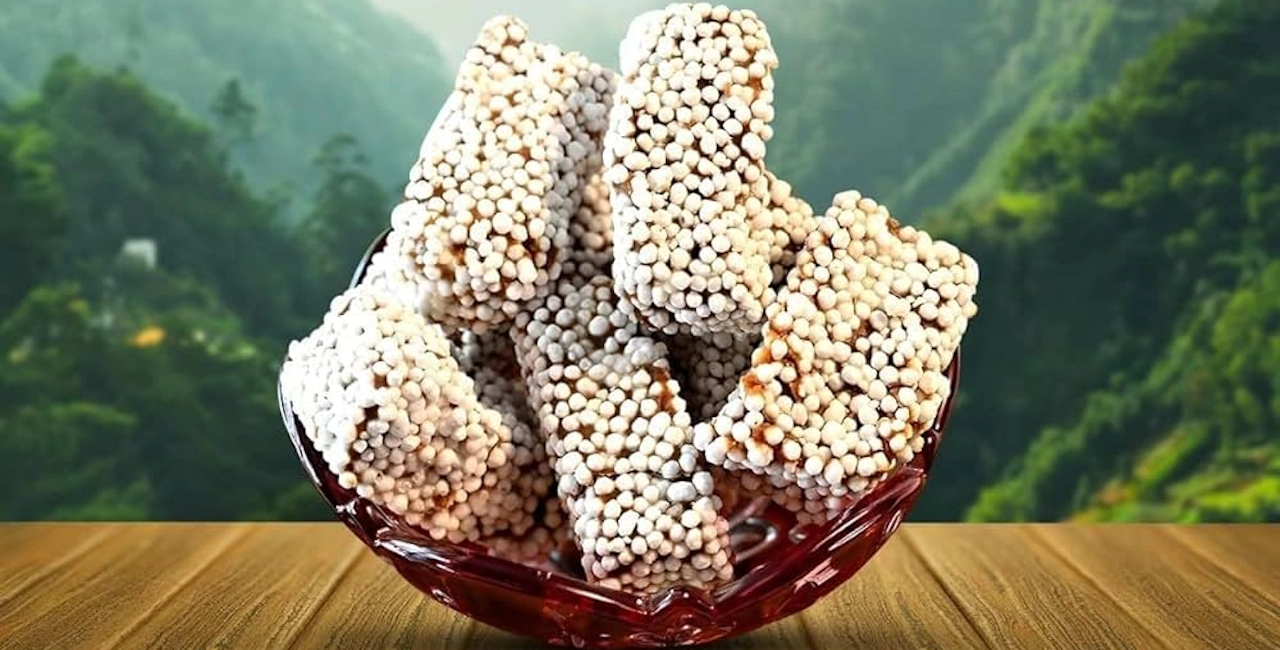Currently Empty: ₹0.00

Bal Mithai is a beloved traditional sweet from the northern Indian state of Uttarakhand, particularly popular in the Kumaon region. Known for its distinctive taste and unique texture, Bal Mithai has become a symbol of the region’s rich culinary heritage. This delicious treat, often enjoyed during festivals and celebrations, is made from khoya (reduced milk) and coated with tiny white sugar balls, making it a favorite among locals and tourists alike.
Origins and History
The exact origins of Bal Mithai are somewhat unclear, but it is widely believed to have been created in the Kumaon region during the early 20th century. Some sources suggest that it was first made in Almora, a town known for its scenic beauty and cultural significance. Over time, Bal Mithai has become synonymous with Almora, with many sweet shops in the town claiming to have the best and most authentic versions of this sweet delicacy.
Bal Mithai’s popularity grew rapidly, and it soon became an essential part of local traditions and festivities. The sweet is often given as a gift during weddings, religious ceremonies, and other special occasions, symbolizing joy and celebration. Its rich taste and cultural significance have helped it endure as a cherished treat for generations.
Ingredients and Preparation
Bal Mithai is made using a few simple ingredients, but the process requires skill and patience to achieve the perfect texture and flavor. The primary ingredients include:
- Khoya (Mawa): Reduced milk that forms the base of the sweet. It is cooked until it reaches a thick, dense consistency.
- Cane Sugar: Used to sweeten the khoya and form the syrup in which the sweet is cooked.
- Sugar Balls (Khas-Khas): Tiny white sugar balls that coat the surface of the sweet, giving it its distinctive appearance and added sweetness.
The preparation of Bal Mithai involves several steps:
- Preparing the Khoya: Fresh milk is boiled and continuously stirred until it thickens and reduces to a dense, fudge-like consistency. This khoya is then allowed to cool slightly.
- Cooking the Khoya with Sugar: The cooled khoya is mixed with cane sugar and cooked over low heat until the sugar dissolves and blends seamlessly with the khoya, forming a smooth, homogenous mixture.
- Shaping the Sweet: The sweet mixture is then shaped into rectangular or square pieces while it is still warm.
- Coating with Sugar Balls: The pieces are rolled in tiny white sugar balls, which stick to the surface, creating a beautiful and distinctive coating.
Taste and Texture
Bal Mithai has a rich, caramel-like flavor due to the caramelization of the sugar during the cooking process. The khoya gives it a creamy and slightly chewy texture, while the sugar balls add a delightful crunch. The combination of these elements results in a sweet that is both satisfying and addictive. The first bite reveals a burst of sweetness, followed by the smooth, melt-in-the-mouth texture of the khoya and the subtle crunch of the sugar balls.
Cultural Significance
In Uttarakhand, Bal Mithai is more than just a sweet; it is a part of the cultural identity. It is a common sight during festivals such as Diwali, Holi, and various local fairs. Families often exchange boxes of Bal Mithai as a gesture of goodwill and celebration. The sweet is also an integral part of wedding ceremonies, where it is distributed among guests as a token of joy and prosperity.
Modern Variations and Availability
While traditional Bal Mithai remains popular, there have been some modern variations to cater to evolving tastes. Some sweet shops experiment with adding flavors such as chocolate or nuts to the khoya mixture, offering a twist on the classic recipe. Despite these innovations, the original version continues to be the most cherished.
Today, Bal Mithai can be found in sweet shops across Uttarakhand and even in some urban centers outside the state. It has gained a reputation as a must-try delicacy for visitors to the region. Many tourists take boxes of Bal Mithai back home as a delicious souvenir of their visit to the scenic hills of Uttarakhand.
Conclusion
Bal Mithai, with its rich history, unique preparation, and delightful taste, stands as a testament to the culinary heritage of Uttarakhand. It is a sweet that not only satisfies the palate but also connects people to the cultural and traditional roots of the region. Whether enjoyed during a festive celebration or as a special treat, Bal Mithai remains a beloved delicacy that continues to bring joy and sweetness to the lives of those who savor it.


